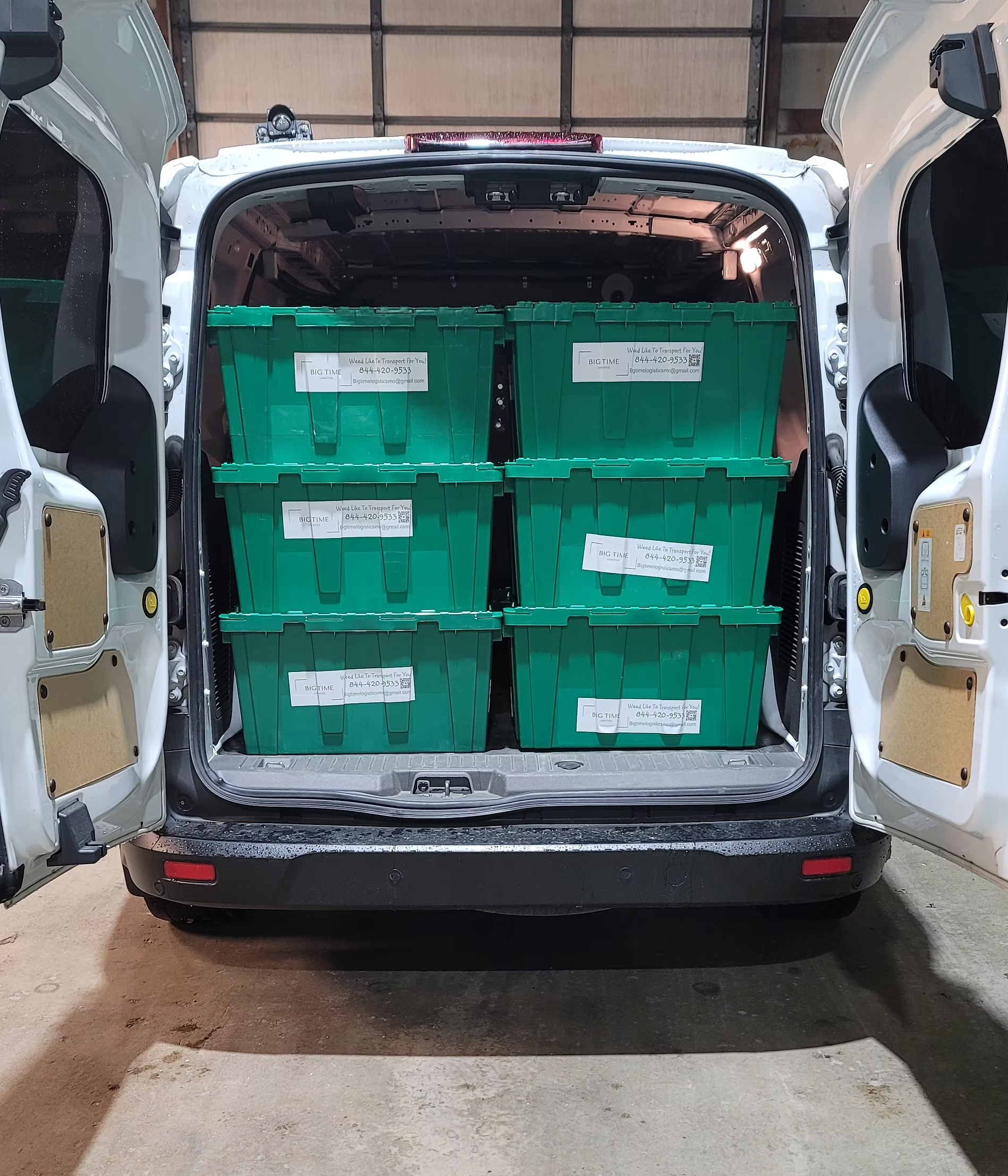Big Time Logistics to launch on-demand home delivery for Missouri marijuana consumers
Big Time Logistics, one of Missouri’s largest third-party cannabis transporters, plans to launch consumer home delivery with dispensary partners, with pilots in the Springfield–Lebanon area this fall before expanding to St. Louis and Kansas City in early 2026 and targeting statewide coverage by the end of summer 2026.
Head of Sales and Customer Relations Chase Gunter said the consumer-facing program will mirror modern on-demand services. “We will be a third party delivery transporter, delivering product from every dispensary to the consumers in that area,” Gunter said. “One thing that’s really going to set us apart is we’re going to offer on demand. Just as easy as ride sharing or Uber Eats, you click a button and we can be there within an allotted time.”
Gunter outlined three delivery options that dispensaries can offer through Big Time’s service. “We’re offering a standard delivery, on demand delivery, and scheduled delivery. If you get home at six o’clock from work and you want your weed delivered then, we’ll have it at your door,” he said.
The company says it is preparing a phased rollout. “We’re looking at a quarter one rollout in St. Louis and Kansas City,” Hartman said. “By the end of summer 2026, we will be hopefully statewide.” He added that pilot testing is underway with partners in southwest Missouri. “We’re working with Blue Sage in Lebanon to do some beta testing. In the Springfield market, look to see it happening sometime in October.”
Hartman said the service is designed to complement, not compete with, brick-and-mortar retailers by unlocking demand from consumers who cannot or will not shop in person. “There’s a lot of people that just can’t physically get to the dispensary,” Hartman said. “Some people won’t go in because of the stigma, but they want the product. This is an opportunity for dispensaries to get more sales that weren’t even happening before.”
Big Time argues a specialized logistics partner can reduce operational friction for retailers that previously tried delivery in-house. Gunter pointed to capital costs, staffing, and compliance as barriers. “When dispensaries manage their own fleet, maintenance is one of the biggest challenges. You’re paying for tires, fuel, oil, and you are paying someone to manage it,” he said. “Vans alone are very expensive nowadays, especially to get them fully commenced to be used in the state. You’re looking at tens of thousands of dollars before you make your first dollar. Another problem is manpower. You are taking a budtender off the sales floor, and it takes away from your sales.”

To make the economics predictable for retailers, Big Time plans a subscription model. “For dispensaries, we’re looking at a small fee,” Gunter said. “We’re thinking $420 a month, which is next to nothing. We like a relationship-based business, and we want them to see the proof in the pudding with a small subscription.” On the consumer side, Gunter said delivery fees will vary by service type. “Consumers will be covering on the back end, and those are going to range depending on the deliveries. You’re looking anywhere between $20 to $40 per transaction.”
Safety, compliance, and professionalism are central to the design, Hartman empahasized, “Our drivers will be background checked and agents of the state,” he said. “Vans have cameras, and our team will be wearing body cams. Every single one of them comes in dressed to the nines. We wanted to carry that same professionalism over to the delivery side so when somebody sees someone getting out of a van, they know it’s official.”
Deliveries will not be limited to a customer’s home address, the company said. “That’s one thing about this delivery. It doesn’t have to be delivered to your home. It can be delivered wherever you’re at,” Gunter told Greenway. “Say you’re out at an event and you want product there, it can be brought there.”
Big Time will pair its fleet operations with real-time software updates for consumers. “James acquired a software company and they are the software behind our delivery service,” Gunter said. “We’re working it so customers will get updates like a pizza tracker. ‘It’s in the oven, it’s on its way, minutes away.’ That’s what we’re looking at.”
Acquiring the tech and optimizing their data and efficiencies changed the internal discussion about home delivery. Hartman had emphasized that the company would not move forward until it could meet on-demand expectations statewide. “When we first opened four years ago, people asked me about home delivery and I didn’t see a path to it,” he said. “With technology and the delivery apps hitting the market, that gave us ideas. We sat down every week, worked through the problems, and we said we’re not going to do it if we can’t do on demand. We’re not going to be showed up. Our team kept working until we could figure it out.”
Gunter framed the effort as an industry upgrade more than a novel experiment. “Over the past few years we’ve been very blessed to be in this position,” he said. “I really think we’ll change the industry with this.”





